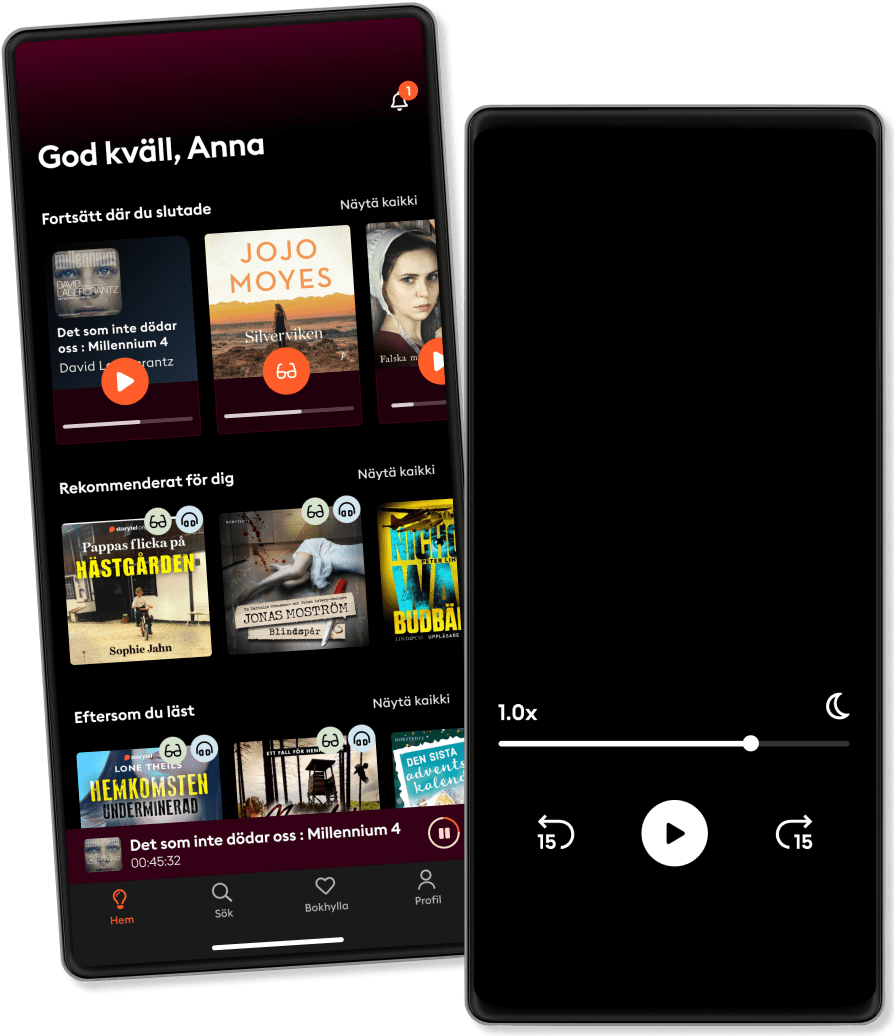Listen and read
Step into an infinite world of stories
- Read and listen as much as you want
- Over 1 million titles
- Exclusive titles + Storytel Originals
- 7 days free trial, then €9.99/month
- Easy to cancel anytime
Objects in Air: Artworks and Their Outside around 1900
- Language
- English
- Format
- Category
Non-fiction
Margareta Ingrid Christian unpacks the ways in which, around 1900, art scholars, critics, and choreographers wrote about the artwork as an actual object in real time and space, surrounded and fluently connected to the viewer through the very air we breathe. Theorists such as Aby Warburg, Alois Riegl, Rainer Maria Rilke, and the choreographer Rudolf Laban drew on the science of their time to examine air as the material space surrounding an artwork, establishing its “milieu,” “atmosphere,” or “environment.” Christian explores how the artwork’s external space was seen to work as an aesthetic category in its own right, beginning with Rainer Maria Rilke’s observation that Rodin’s sculpture “exhales an atmosphere” and that Cezanne’s colors create “a calm, silken air” that pervades the empty rooms where the paintings are exhibited.
Writers created an early theory of unbounded form that described what Christian calls an artwork’s ecstasis or its ability to stray outside its limits and engender its own space. Objects viewed in this perspective complicate the now-fashionable discourse of empathy aesthetics, the attention to self-projecting subjects, and the idea of the modernist self-contained artwork. For example, Christian invites us to historicize the immersive spatial installations and “environments” that have arisen since the 1960s and to consider their origins in turn-of-the-twentieth-century aesthetics. Throughout this beautifully written work, Christian offers ways for us to rethink entrenched narratives of aesthetics and modernism and to revisit alternatives.
© 2024 The University of Chicago Press (Ebook): 9780226764801
Release date
Ebook: May 31, 2024
Others also enjoyed ...
- Patronizing the Arts Marjorie Garber
- In Praise of Hands Victoria Charles
- Natural Curiosities Alfred Russel Wallace
- Fringe and Fortune: The Role of Critics in High and Popular Art Wesley Monroe Shrum, Jr.
- Aestheticism in Art William Hogarth
- Lucas Cranach the elder Alexander Stepanov
- Gustave Courbet and artworks Patrick Bade
- Goya and artworks Jp. A. Calosse
- Art History Rococo Victoria Charles
- The ultimate book on Picasso Victoria Charles
- Fourth Wing (1 of 2) [Dramatized Adaptation]: The Empyrean 1 Rebecca Yarros
4.7
- Fourth Wing (2 of 2) [Dramatized Adaptation]: The Empyrean 1 Rebecca Yarros
4.8
- A Court of Thorns and Roses (1 of 2) [Dramatized Adaptation]: A Court of Thorns and Roses 1 Sarah J. Maas
4.3
- Harry Potter and the Philosopher's Stone J.K. Rowling
4.7
- Fourth Wing Rebecca Yarros
4.6
- From Blood and Ash (1 of 2) [Dramatized Adaptation]: Blood and Ash 1 Jennifer L. Armentrout
4.3
- A Court of Frost and Starlight [Dramatized Adaptation]: A Court of Thorns and Roses 3.1 Sarah J. Maas
4
- The Awakening [Dramatized Adaptation]: Zodiac Academy 1 Susanne Valenti
3.9
- House of Earth and Blood (1 of 2) [Dramatized Adaptation]: Crescent City 1 Sarah J. Maas
4.4
- The Fellowship of the Ring J. R. R. Tolkien
4.8
- Two Can Play Ali Hazelwood
3.8
- Summary of Atomic Habits by James Clear Best Self Audio
4.3
- Yellowface: A Novel R. F. Kuang
4.1
- The Pumpkin Spice Café Laurie Gilmore
3.3
- Twisted Love Ana Huang
3.7
This is why you’ll love Storytel
Listen and read without limits
Enjoy stories offline
Kids Mode (child-safe environment)
Cancel anytime
Unlimited
Listen and read as much as you want
1 account
Unlimited Access
Offline Mode
Kids Mode
Cancel anytime
English
International
